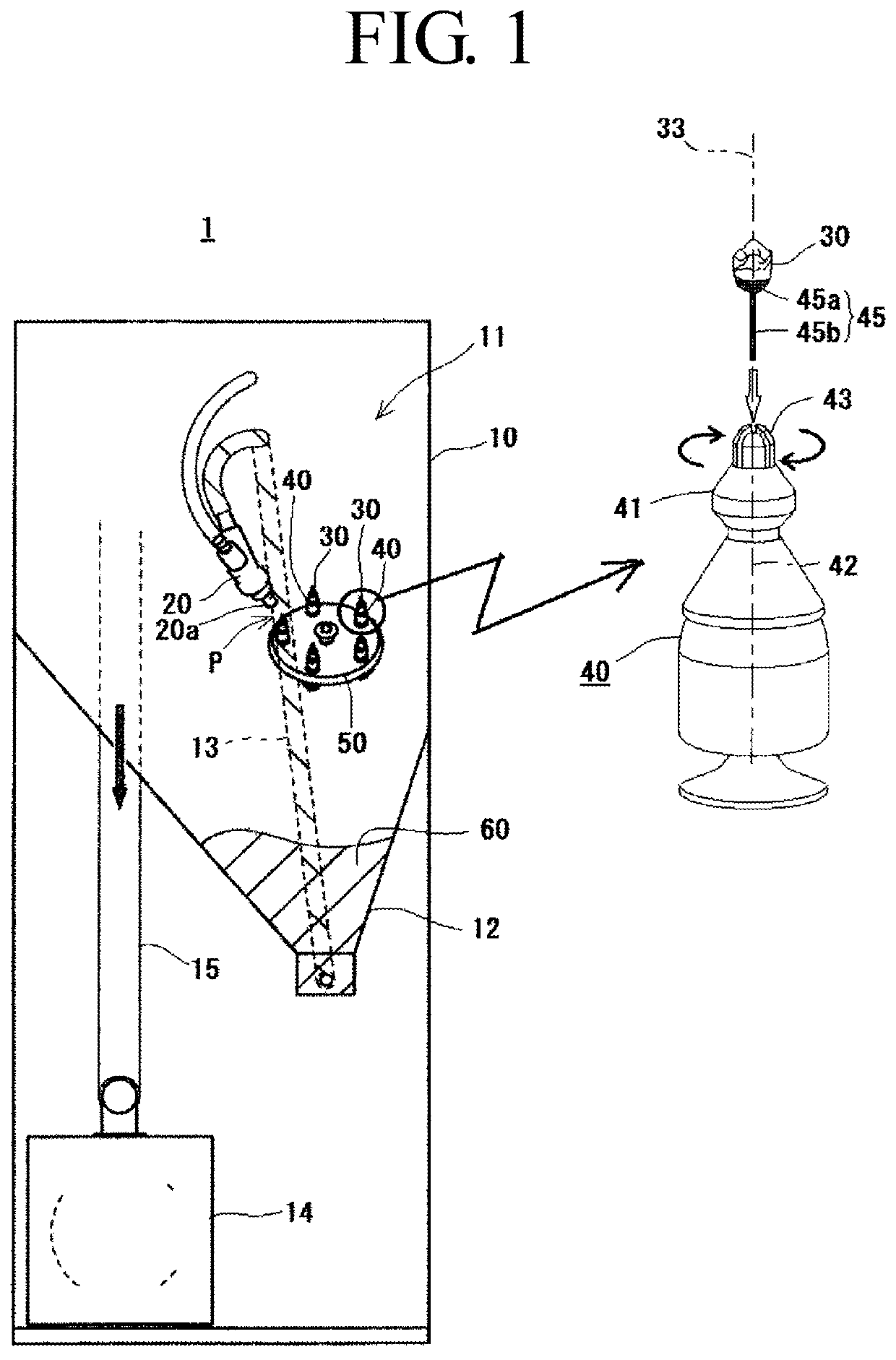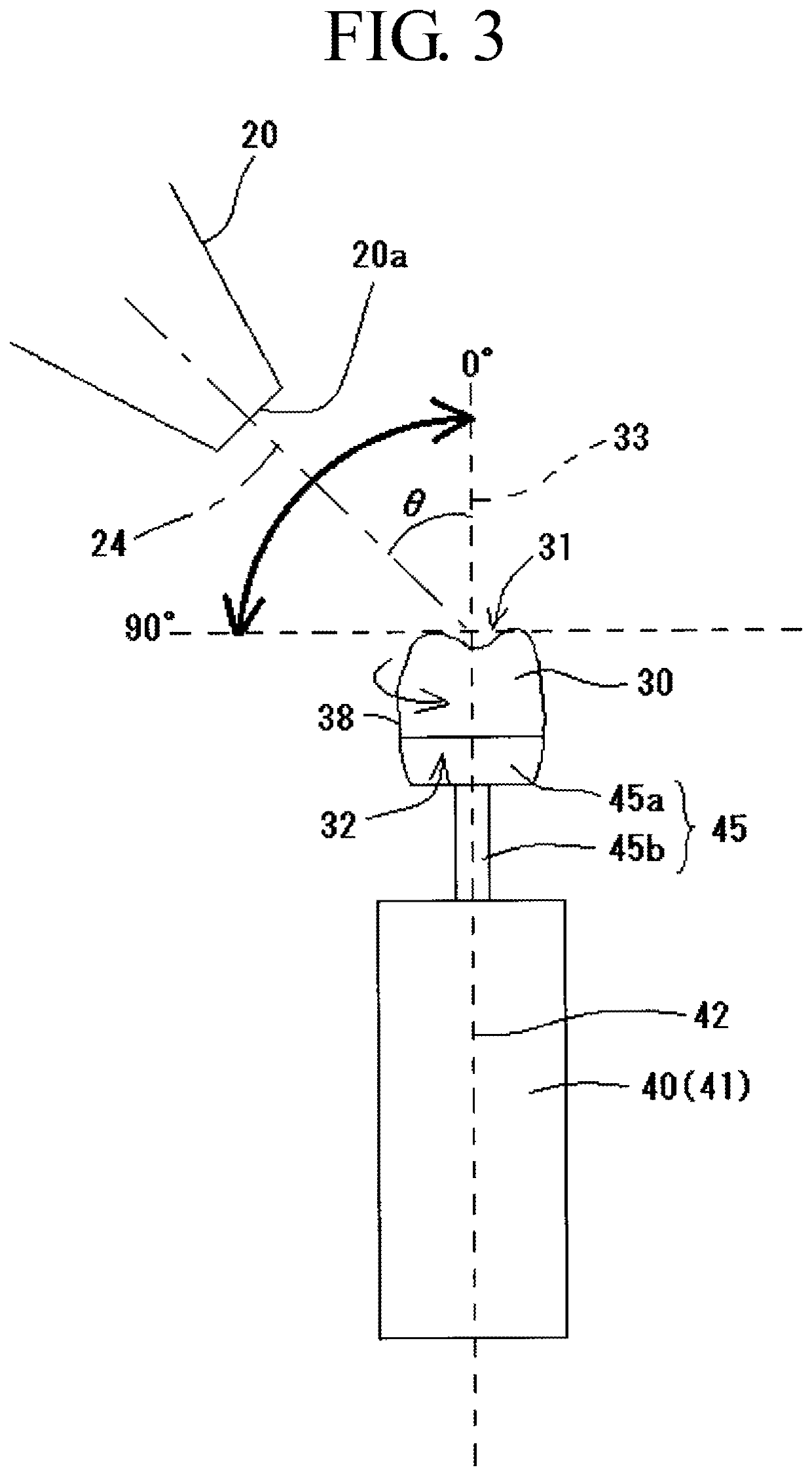Method for polishing artificial tooth and device for polishing artificial tooth
a technology for artificial teeth and polishing methods, which is applied in the field of polishing artificial teeth and a device for polishing artificial teeth, can solve the problems of reduced strength of artificial teeth, poor bite, and difficulty in finishing, and achieve the effects of preventing cracks, reducing strength, and preventing deposition
- Summary
- Abstract
- Description
- Claims
- Application Information
AI Technical Summary
Benefits of technology
Problems solved by technology
Method used
Image
Examples
example 1
(1) Example 1
[0120]The surface roughness of artificial teeth as per Example 1 (polishing artificial teeth manufactured from hybrid resin) was measured before and after polishing using a contact needle type of surface roughness measuring instrument (manufactured by Tokyo Seimitsu Co., Ltd.). The results thereof are listed in Table 2 together with the results of observing the state of glossiness with the naked eye.
[0121]
TABLE 2Surface Roughness Before and After Polishing(Artificial Teeth Manufactured from Hybrid Resin)Ra (μm) Before PolishingRa (μm) After PolishingOcclusal Surface0.820.08Side Surface1.730.56GlossinessNoneGood
[0122]It is apparent from the above results that the surface roughness can be greatly improved and polishing can also achieve a state of good glossiness by polishing artificial teeth manufactured from a hybrid resin using the polishing method of the present invention. The finishing polish of the artificial teeth can also be achieved in an extremely short duration ...
PUM
| Property | Measurement | Unit |
|---|---|---|
| inclination angle | aaaaa | aaaaa |
| temperature | aaaaa | aaaaa |
| inclination angle | aaaaa | aaaaa |
Abstract
Description
Claims
Application Information
 Login to View More
Login to View More - R&D
- Intellectual Property
- Life Sciences
- Materials
- Tech Scout
- Unparalleled Data Quality
- Higher Quality Content
- 60% Fewer Hallucinations
Browse by: Latest US Patents, China's latest patents, Technical Efficacy Thesaurus, Application Domain, Technology Topic, Popular Technical Reports.
© 2025 PatSnap. All rights reserved.Legal|Privacy policy|Modern Slavery Act Transparency Statement|Sitemap|About US| Contact US: help@patsnap.com



